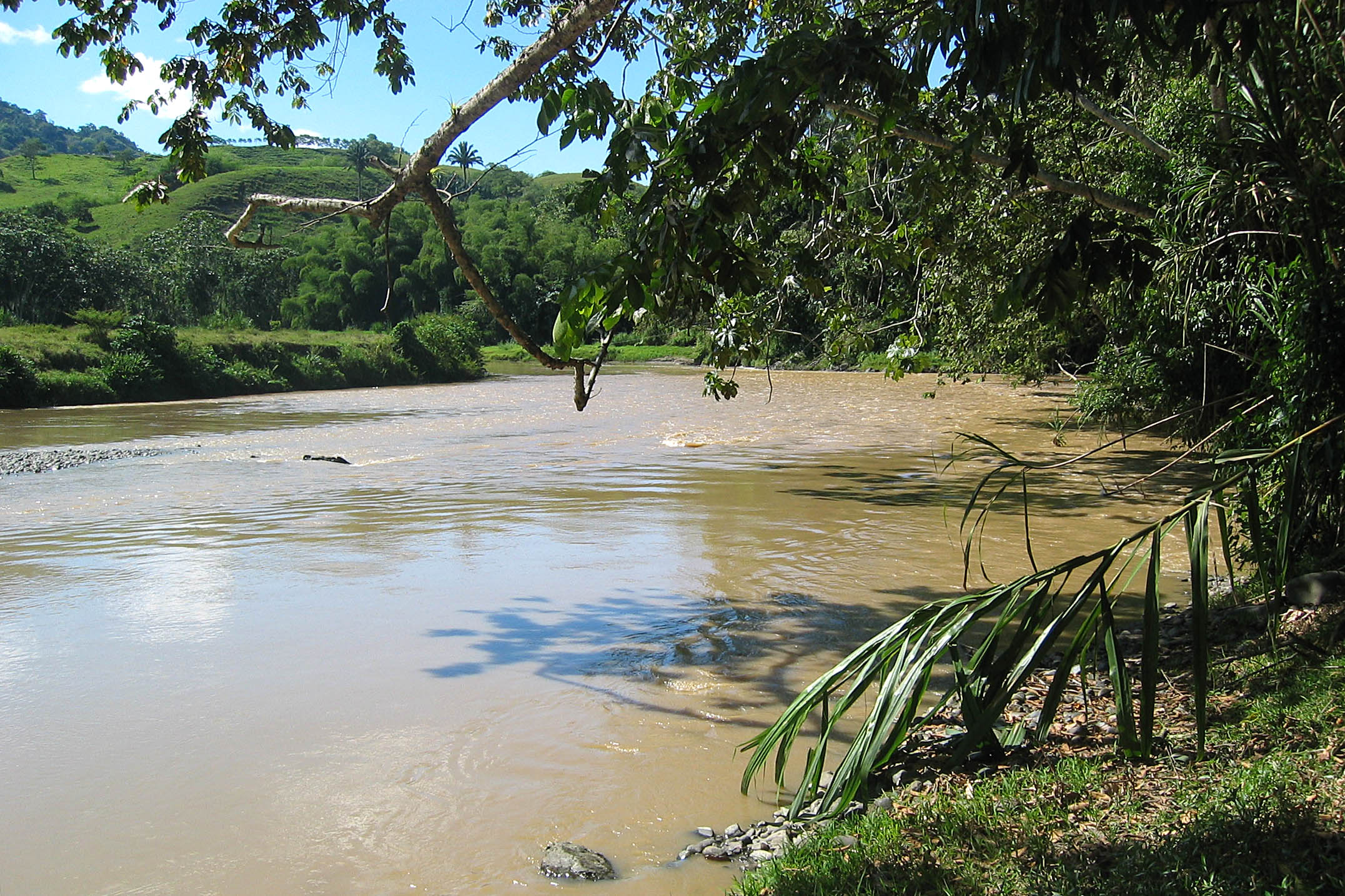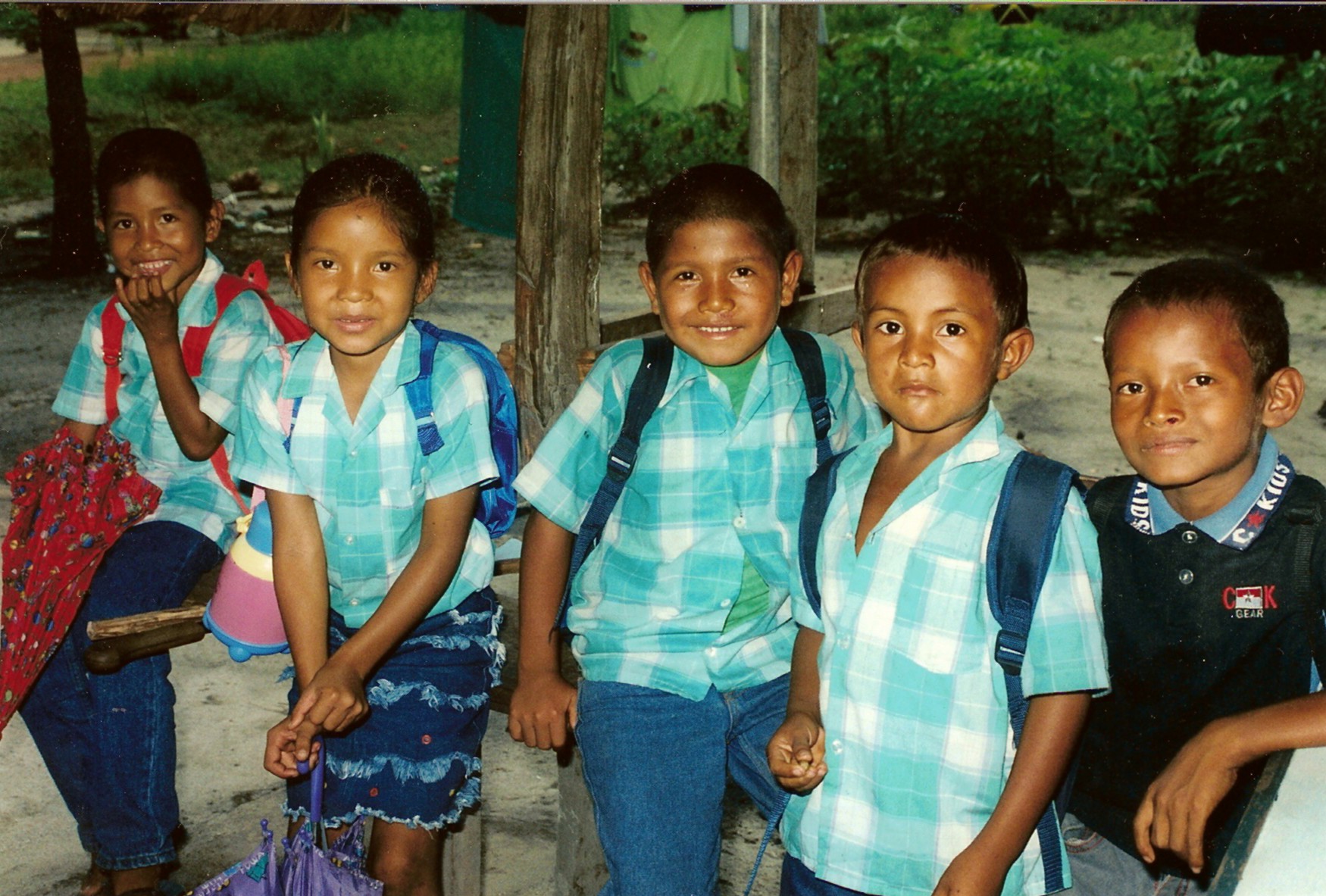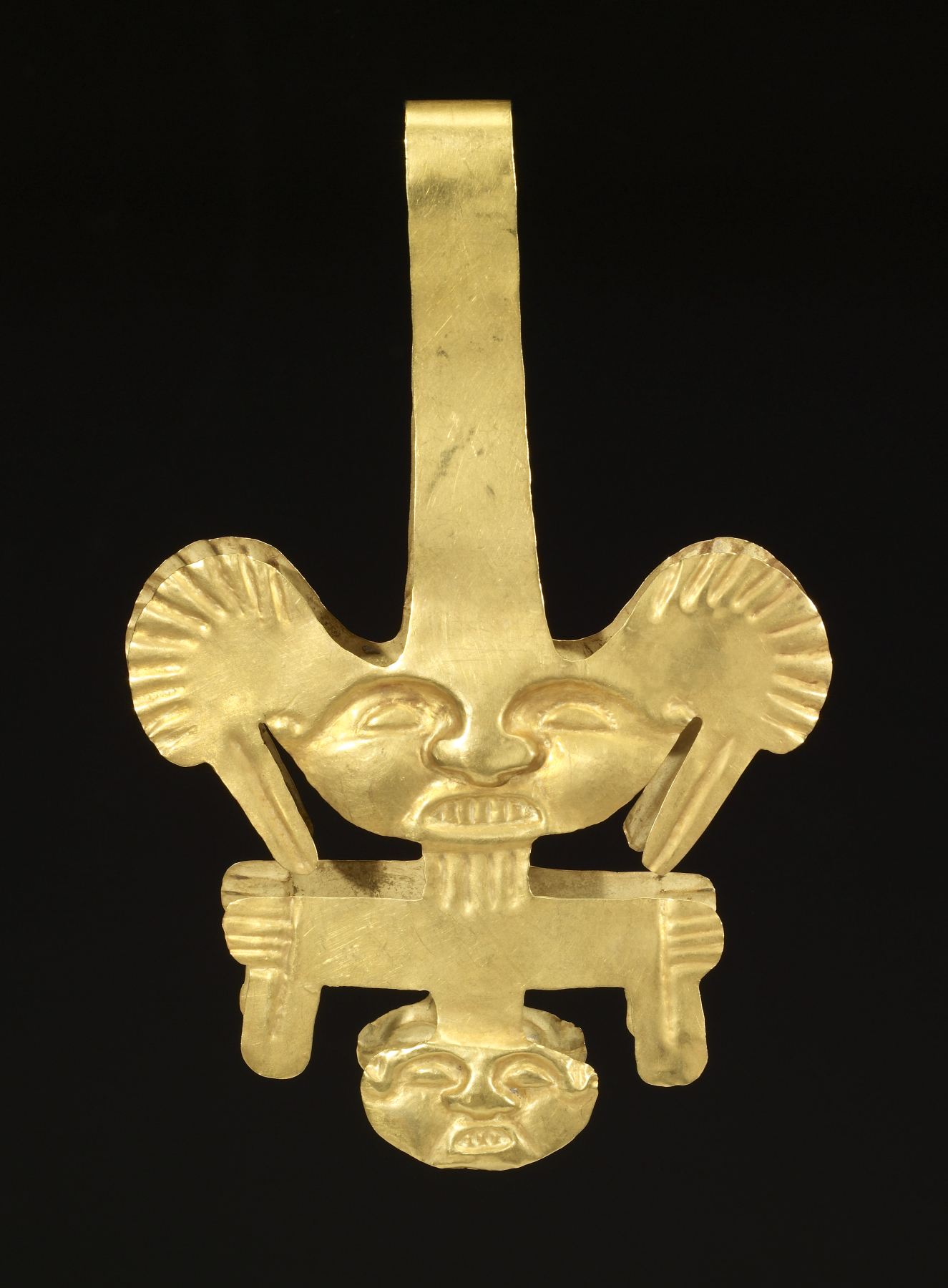|
Quindío Department
Quindío () is a department of Colombia. It is in the western central region of the country, crossed by the Andes mountains. Its capital is Armenia. It is famous for the quality of the coffee plantations, colorful architecture, benign weather, variety of hotel accommodations and tourist landmarks. This department is located in a strategic area, in the center of the triangle formed by the three main cities of the country: Bogotá, Medellín and Cali. Quindío is the second-smallest Colombian department (0.2% of the national territory) with 12 municipalities. Ethnographically and culturally, it belongs to the Paisa region. History Before the Spanish invasion the entire area was inhabited by the peoples of the Quimbaya civilization until the 10th century B.C. At the time of Spanish conquest the area was inhabited by indigenous people of Carib descent known as the Pijao tribes. The native population was gradually reduced due to slavery, armed confrontations, and massacres du ... [...More Info...] [...Related Items...] OR: [Wikipedia] [Google] [Baidu] |
Departments Of Colombia
Colombia is a unitary state, unitary republic made up of thirty-two departments (Spanish language, Spanish: ''departamentos'', sing. ''departamento'') and a Capital District (''Capital districts and territories, Distrito Capital''). Each department has a governor (''gobernador'') and an Assembly (''Asamblea Departamental''), elected by popular vote for a four-year period. The governor cannot be re-elected in consecutive periods. Departments are administrative division, country subdivisions and are granted a certain degree of autonomy. Departments are formed by a grouping of municipalities of Colombia, municipalities (''municipios'', sing. ''municipio''). Municipal government is headed by mayor (''alcalde'') and administered by a municipal council (''concejo municipal''), both of which are elected for four-year periods. Some departments have subdivisions above the level of municipalities, commonly known as provinces of Colombia, provinces. Chart of departments Each one of th ... [...More Info...] [...Related Items...] OR: [Wikipedia] [Google] [Baidu] |
Colombia
Colombia (, ; ), officially the Republic of Colombia, is a country in South America with insular regions in North America—near Nicaragua's Caribbean coast—as well as in the Pacific Ocean. The Colombian mainland is bordered by the Caribbean Sea to the north, Venezuela to the east and northeast, Brazil to the southeast, Ecuador and Peru to the south and southwest, the Pacific Ocean to the west, and Panama to the northwest. Colombia is divided into 32 departments and the Capital District of Bogotá, the country's largest city. It covers an area of 1,141,748 square kilometers (440,831 sq mi), and has a population of 52 million. Colombia's cultural heritage—including language, religion, cuisine, and art—reflects its history as a Spanish colony, fusing cultural elements brought by immigration from Europe and the Middle East, with those brought by enslaved Africans, as well as with those of the various Amerindian civilizations that predate colonization. Spanish is th ... [...More Info...] [...Related Items...] OR: [Wikipedia] [Google] [Baidu] |
Monument To Effort
''The Monument to Effort'' or Monumento al Esfuerzo is a large sculpture realized by Colombian artist Rodrigo Arenas Betancur in the department of Quindío (Colombia) as a memorial for the foundation of the city and the antioquian colonisation that made it possible. This monument is inspired by the painting ''Horizontes'' of antioquian artist Francisco Antonio Cano, that depicts a couple of peasants who point to unknown lands in the horizon, where they hope to colonize. The monument represents the strong will of the first inhabitants of the area who arrived to this selvatic location to start a settlement with their families, looking for news options of survival and escaping the civil wars that affected the northern areas of the country during the 19th century. It is a 28-meter high bronze sculpture and was dedicated in 1978. Its current location is in the main square of Armenia Armenia (), , group=pron officially the Republic of Armenia,, is a landlocked country in ... [...More Info...] [...Related Items...] OR: [Wikipedia] [Google] [Baidu] |
Antioquia Department
) , anthem = Himno de Antioquia , image_map = Antioquia in Colombia (mainland).svg , map_alt = , map_caption = Antioquia shown in red , image_map1 = Antioquia Topographic 2.png , map_caption1 = Topography of the department , coordinates = , subdivision_type = Country , subdivision_name = , subdivision_type1 = Region , subdivision_name1 = Andean Region , established_title = Established , established_date = 1826 , founder = , named_for = , seat_type = Capital , seat = Medellín , parts_type = Largest city , parts_style = para , p1 = , government_footnotes ... [...More Info...] [...Related Items...] OR: [Wikipedia] [Google] [Baidu] |
Salento, Quindío
Salento is a town and municipality in the north-east of the department of Quindío, Colombia. The municipality covers an area of 377.67 km2. It was the first settlement in Quindío of the modern era, and the first municipality founded in the department. The town of Salento itself is located 24 km northeast of the departmental capital Armenia. In 2005 the municipality of Salento had an estimated population of 7247, of which 3597 lived in the main urban zone. The main route from Popayán and Cali to Bogotá used to pass through Salento (see below), but when the route was diverted the town became isolated and did not develop as rapidly as the rest of the region. For this reason it has retained more of its traditional colonial architecture than almost any other town in the ''eje cafetero'', along with a quiet and relaxed way of life, and as a result the town and nearby Cocora valley are among the most popular tourist destinations in Colombia. The historic center of t ... [...More Info...] [...Related Items...] OR: [Wikipedia] [Google] [Baidu] |
La Tebaida, Quindío
La Tebaida () is a municipality in the western part of the department of Quindío, Colombia. It is located 17 km southwest of the departmental capital Armenia. History La Tebaida was founded by Luis Arango Cardona, born in Manizales on February 19, 1879. He was one of the first people to undertake systematic archaeological studies of the indigenous tombs (''guacas'') in Quindío. His research led to the publication in 1924 of his two-volume book ''Recuerdos de la guaquería en el Quindío'', the first study of its type in Colombia. In 1899 Arango and his brother had started a farm with an area of 6.7 km² in the south of Armenia. They named their farm La Tebaida, the name of a region in Egypt where Christian monks had sought solitude for contemplation and prayer. In order to increase the productivity of their land, they divided it into 10 hectare blocks. The brothers distributed these to approximately 60 families, who paid the owners with a proportion of their p ... [...More Info...] [...Related Items...] OR: [Wikipedia] [Google] [Baidu] |
Amerindians
The Indigenous peoples of the Americas are the inhabitants of the Americas before the arrival of the European settlers in the 15th century, and the ethnic groups who now identify themselves with those peoples. Many Indigenous peoples of the Americas were traditionally hunter-gatherers and many, especially in the Amazon basin, still are, but many groups practiced aquaculture and agriculture. While some societies depended heavily on agriculture, others practiced a mix of farming, hunting, and gathering. In some regions, the Indigenous peoples created monumental architecture, large-scale organized cities, city-states, chiefdoms, states, kingdoms, republics, confederacies, and empires. Some had varying degrees of knowledge of engineering, architecture, mathematics, astronomy, writing, physics, medicine, planting and irrigation, geology, mining, metallurgy, sculpture, and gold smithing. Many parts of the Americas are still populated by Indigenous peoples; some countries have sizea ... [...More Info...] [...Related Items...] OR: [Wikipedia] [Google] [Baidu] |
Rubber Boom
The Amazon rubber boom ( pt, Ciclo da borracha, ; es, Fiebre del caucho, , 1879 to 1912) was an important part of the economic and social history of Brazil and Amazonian regions of neighboring countries, being related to the extraction and commercialization of rubber. Centered in the Amazon Basin, the boom resulted in a large expansion of European colonization in the area, attracting immigrant workers, generating wealth, causing cultural and social transformations, and wreaking havoc upon indigenous societies. It encouraged the growth of cities such as Manaus and Belém, capitals within the respective Brazilian states of Amazonas and Pará, among many other cities throughout the region like Itacoatiara, Rio Branco, Eirunepé, Marabá, Cruzeiro do Sul and Altamira; as well as the expansion of Iquitos in Peru, Cobija in Bolivia and Leticia in Colombia. The rubber boom occurred largely between 1879 and 1912. There was heightened rubber production and associated activiti ... [...More Info...] [...Related Items...] OR: [Wikipedia] [Google] [Baidu] |
Kalina People
The Kalina, also known as the Caribs or mainland Caribs and by several other names, are an indigenous people native to the northern coastal areas of South America. Today, the Kalina live largely in villages on the rivers and coasts of Venezuela, Guyana, Suriname, French Guiana, and Brazil. They speak a Cariban language known as Carib. They may be related to the Island Caribs of the Caribbean, though their languages are unrelated. Name The exonym ''Caribe'' was first recorded by Christopher Columbus. One hypothesis for the origin of ''Carib'' is that it means "brave warrior". Its variants, including the English ''Carib'', were then adopted by other European languages. Early Spanish explorers and administrators used the terms ''Arawak'' and ''Caribs'' to distinguish the peoples of the Caribbean, with ''Carib'' reserved for indigenous groups that they considered hostile and ''Arawak'' for groups that they considered friendly. The Kalina call themselves ''Kalina'' or ''Karìna'' , ... [...More Info...] [...Related Items...] OR: [Wikipedia] [Google] [Baidu] |
Quimbaya Civilization
The Quimbaya (/kɪmbaɪa/) were a small indigenous group in present-day Colombia noted for their gold work characterized by technical accuracy and detailed designs. The majority of the gold work is made in ''tumbaga'' alloy, with 30% copper, which imparts meaningful color tonalities to the pieces. History The Quimbaya inhabited the areas corresponding to the modern departments of Quindío, Caldas and Risaralda in Colombia, around the valley of the Cauca River. There is no clear data about when they were initially established; the current best guess is around the 1st century BCE. The name "quimbaya" has become a traditional generic term to refer to many of the productions and objects found in this geographical area, even if they do not come rigorously from the same ethnic group and come from different epochs in time. The Quimbaya people reached their zenith during the 4th to 7th century CE period known as The Quimbaya Classic. The culture's the most emblematic piece come ... [...More Info...] [...Related Items...] OR: [Wikipedia] [Google] [Baidu] |
Paisa Region
A Paisa is someone from a region in the northwest of Colombia, including part of the West and Central ''cordilleras'' of the Andes in Colombia. The Paisa region is formed by the departments of Antioquia, Caldas, Risaralda and Quindío. Some regions of Valle del Cauca Department (north) and Tolima Department (west) culturally identify as ''paisas''. The main cities of the Paisa region are Medellín, Pereira, Manizales and Armenia. The name Paisa derives from the Spanish apocope of ''Paisano'' (countryman), but they are also known as "Antioqueños" (those from the old Antioquia, which included the other Paisa provinces, which was a single administrative body until the creation of the Caldas State in 1905). Although many refer to Paisas as an ethnic group (''raza antioqueña'' or ''raza paisa''), they are a part of the Colombians and Latin American peoples. Paisas can be found in other regions of Colombia and the Americas where they have migrated. They have such a pa ... [...More Info...] [...Related Items...] OR: [Wikipedia] [Google] [Baidu] |
Cali
Santiago de Cali (), or Cali, is the capital of the Valle del Cauca department, and the most populous city in southwest Colombia, with 2,227,642 residents according to the 2018 census. The city spans with of urban area, making Cali the second-largest city in the country by area and the third most populous after Bogotá and Medellín. As the only major Colombian city with access to the Pacific Coast, Cali is the main urban and economic center in the south of the country, and has one of Colombia's fastest-growing economies. The city was founded on 25 July 1536 by the Spanish explorer Sebastián de Belalcázar. As a sporting center for Colombia, it was the host city for the 1971 Pan American Games. Cali also hosted the 1992 World Wrestling Championships, the 2013 edition of the World Games, the UCI Track Cycling World Championships in 2014, the World Youth Championships in Athletics in 2015 as well as the inaugural Junior Pan American Games in 2021 and the 2022 World Athletic ... [...More Info...] [...Related Items...] OR: [Wikipedia] [Google] [Baidu] |

_2007.jpg)


_01.jpg)
